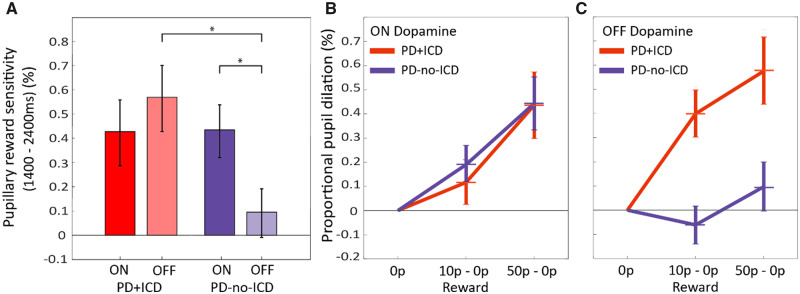Figure 3.
Pupillary responses to rewards in PD+ICD and PD-no-ICD. (A) Mean proportional pupil reward sensitivity (mean pupillary change for 50p condition minus 0p condition) for PD+ICD and PD-no-ICD ON and OFF dopaminergic medication. In PD-no-ICD withdrawing dopamine significantly reduced pupillary reward sensitivity but this was not observed in PD+ICD. The distribution of individual subject’s data is provided in the Supplementary material. (B) Proportional pupillary dilation as a function of reward level in PD+ICD (red) and PD-no-ICD (blue) ON dopaminergic medication, taken as the mean pupil dilation between 1400 ms and 2400 ms. Changes have been normalized to the 0p baseline to demonstrate the relationship between reward sensitivity slopes. (C) Proportional pupillary dilation as a function of reward level in PD+ICD (red) and PD-no-ICD (blue) OFF dopaminergic medication. In PD+ICD being ON dopamine reduced reward sensitivity whereas in PD-no-ICD dopamine increased reward sensitivity. *P < 0.05.

